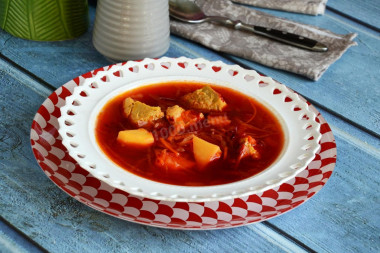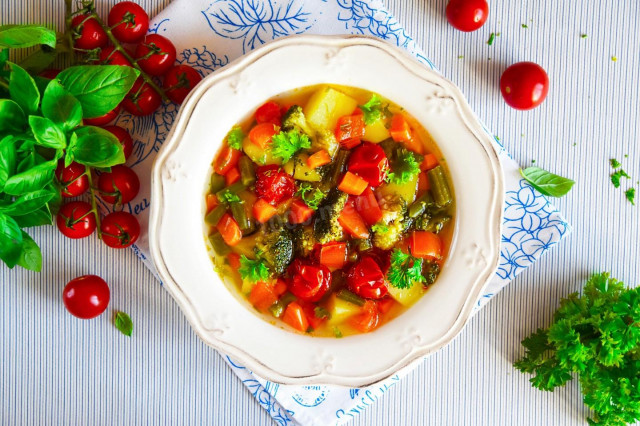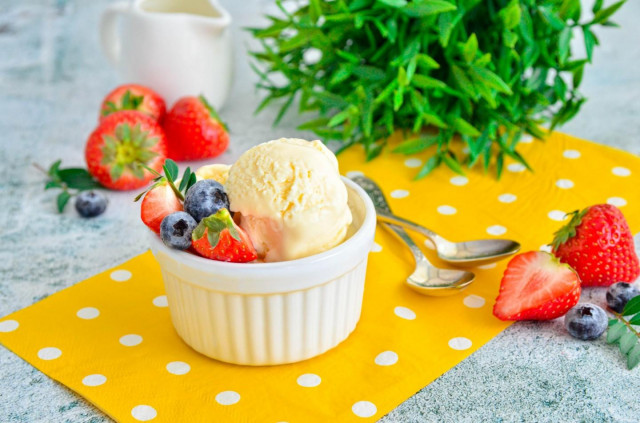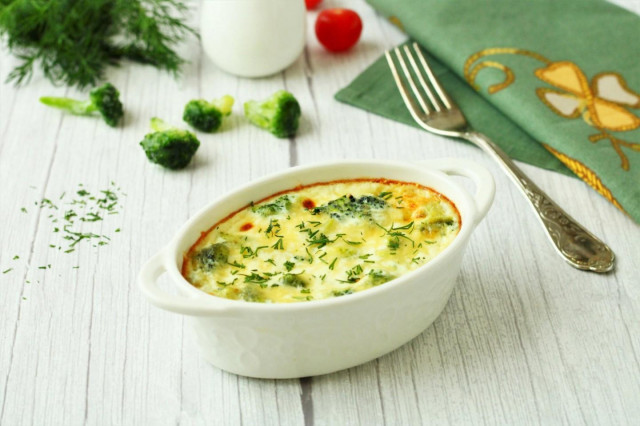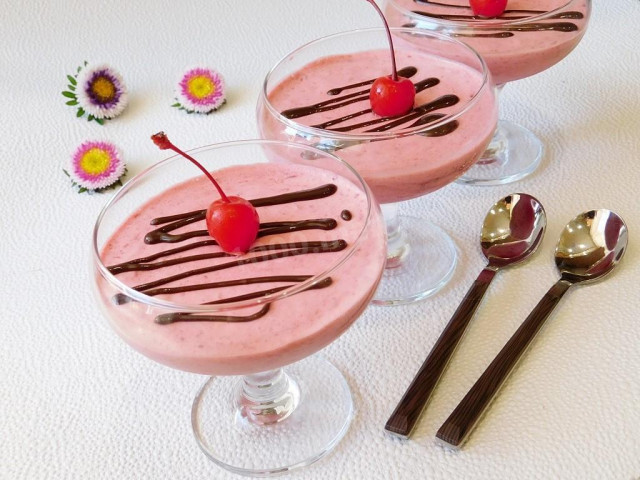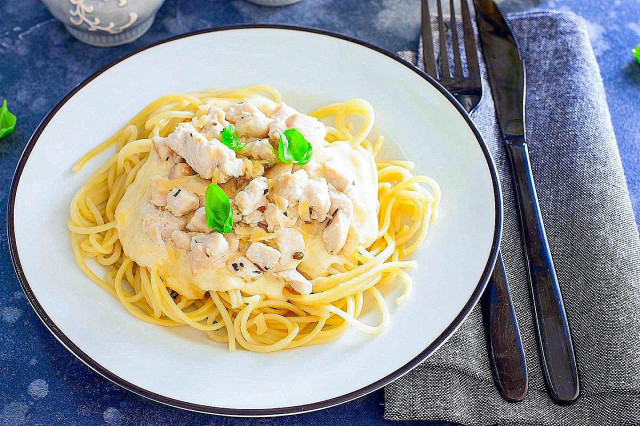Composition / ingredients
Step-by-step cooking
Step 1:
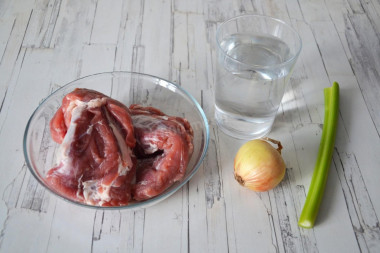
How to cook borscht with pork? First, prepare the necessary products for the broth. To make the borscht fatter, it is better to take the meat on the bones. Wash the pork, dry it with paper towels. Peel the onion from the husk. Rinse the celery stalk and cut it into two parts.
Step 2:
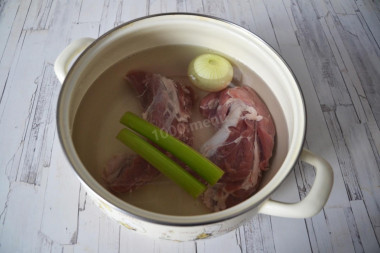
Put a whole onion, celery and a whole piece of meat in a saucepan. Pour filtered water. Do not use tap water, as the taste of the dish will suffer. Put on medium heat. When the broth boils, reduce the heat to minimum and cook for about 1 hour (until the pork is ready). Be sure to remove the resulting foam.
Step 3:
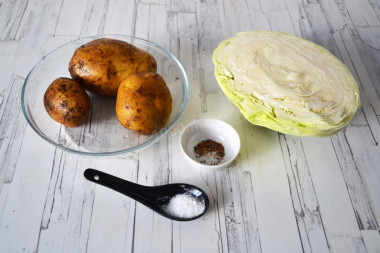
Meanwhile, prepare all the other vegetables and spices on the list.
Step 4:
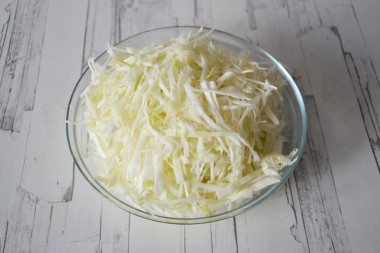
Peel the white cabbage from the upper flaccid and darkened leaves. Cut off about a third of the head. Thinly chop with a knife or on a special grater for cabbage.
Step 5:

Wash the potatoes, peel, cut into small cubes.
Step 6:
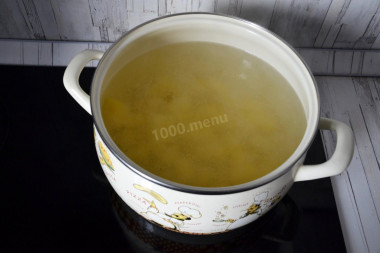
Remove the soft meat from the broth and transfer it to a bowl. Strain the broth itself. The vegetables that were cooked in it will no longer be needed, they can be thrown away. Bring the broth to a boil and add the chopped potatoes. Cook for about 10 minutes after boiling.
Step 7:
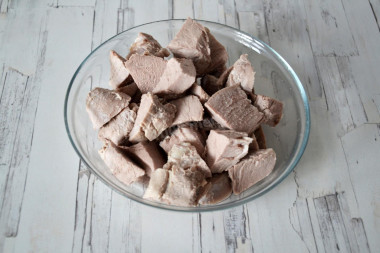
Cut pork into small pieces.
Step 8:
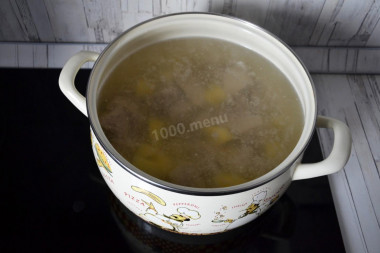
Return the pork slices to the broth. Bring to a boil again.
Step 9:
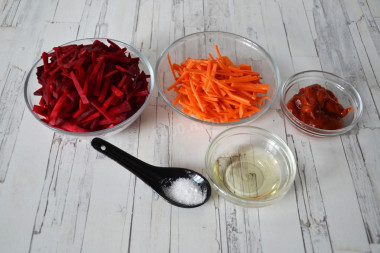
Prepare everything for frying. Peel the carrots and beets. Cut them into thin cubes (or grate them coarsely). Fold into separate containers.
Step 10:
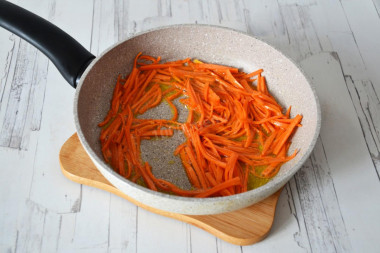
Heat refined vegetable oil in a frying pan with a high smoking temperature. Fry the carrots for 5 minutes until soft.
Step 11:
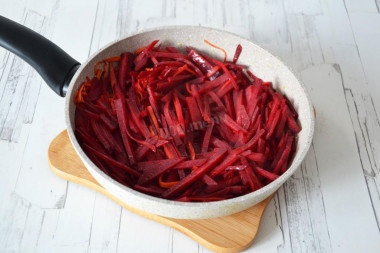
Add beets. Stir-fry for another 5 minutes. To speed up the process, you can use ready-made boiled beets in vacuum packaging. It can not be stewed, but simply cut and add to the soup 5-7 minutes before the end of cooking.
Step 12:
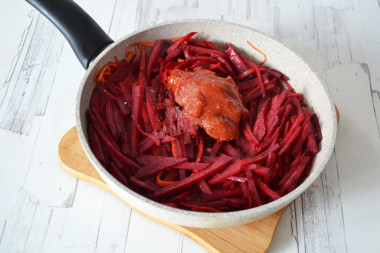
Add tomato paste, sugar and a little salt to the vegetables in the pan. Mix everything well and simmer for another 1-2 minutes. Beets should soften. If you see that there is very little liquid in the pan, pour a couple of spoonfuls of boiled water or broth from the pan.
Step 13:

Put the cabbage in a saucepan with broth. Bring to a boil and cook, stirring, for about 10 minutes.
Step 14:
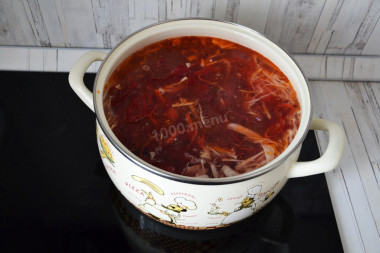
Now transfer the roast to the pan. Mix everything well, add salt and pepper and cook over medium heat for about 15 minutes. If desired, add bay leaf, allspice and black pepper (3 pieces each).
Step 15:

Turn off the fire. Cover the pot with borscht with a lid. Let it brew for about 20 minutes. Then pour on plates and serve until cooled.
If you want, add chopped bell pepper to the vegetable dressing.
For a richer red color, you can add a little lemon juice (1 tbsp. l.) or a pinch of citric acid at the end. This will also have a positive effect on the taste.
For a richer flavor, you can add garlic (2-3 cloves) passed through the press to the pan with the finished borscht.
It will be delicious if you put a spoonful of sour cream in a plate with borscht, sprinkle with chopped dill. Well, and if it's also with garlic dumplings, and with thin slices of lard, so in general it will be perfection itself!
For cooking, it is better to use filtered or bottled water that is neutral to taste. If you use tap water, keep in mind that it can give the dish an unpleasant characteristic taste.
So that the mucous membrane of the eyes is not irritated when slicing onions, rinse the onion and knife with cold water. The cutting board will not absorb the unpleasant onion smell if you rub it with a piece of lemon before slicing.
In addition to pork, any other meat can be used in this dish. Keep in mind that the cooking time, as well as the taste and calorie content of the dish will change. For example, beef is cooked longer than pork, and chicken fillet or turkey is less.
Caloric content of the products possible in the composition of the dish
- Onion - 41 kcal/100g
- Ripe potatoes - 80 kcal/100g
- Baked potatoes - 70 kcal/100g
- Mashed potatoes - 380 kcal/100g
- Boiled potatoes - 82 kcal/100g
- Potatoes in uniform - 74 kcal/100g
- Fried potatoes - 192 kcal/100g
- Green cabbage - 46 kcal/100g
- Fresh frozen green cabbage in a package - 45 kcal/100g
- Pork fat - 333 kcal/100g
- Pork meat - 357 kcal/100g
- Pork - low-fat roast - 184 kcal/100g
- Pork chop on a bone - 537 kcal/100g
- Pork - schnitzel - 352 kcal/100g
- Pork shoulder - 593 kcal/100g
- Boar's leg - 113 kcal/100g
- Pork - 259 kcal/100g
- Beetroot - 40 kcal/100g
- Dried beetroot - 278 kcal/100g
- Boiled beets - 49 kcal/100g
- Carrots - 33 kcal/100g
- Dried carrots - 275 kcal/100g
- Boiled carrots - 25 kcal/100g
- Ground black pepper - 255 kcal/100g
- Granulated sugar - 398 kcal/100g
- Sugar - 398 kcal/100g
- Vegetable oil - 873 kcal/100g
- Tomato paste - 28 kcal/100g
- Salt - 0 kcal/100g
- Water - 0 kcal/100g
- Celery stalk - 12 kcal/100g


